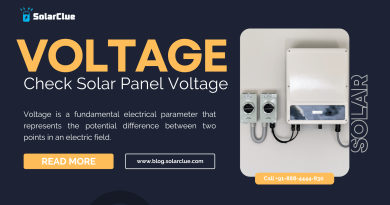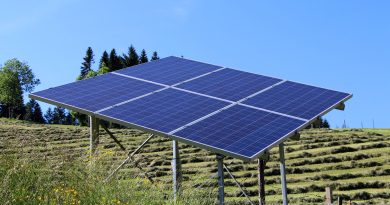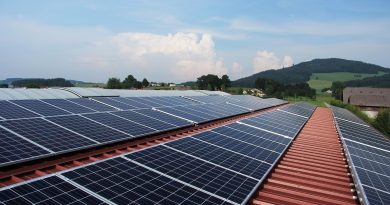How Much Does It Cost To Have Solar Panels Fitted
Installing solar panels is a significant investment, but understanding the factors that influence costs can help you make informed decisions and maximize your return on investment. This guide explores the various factors that affect solar panel prices, government subsidies and incentives, financing options, and cost trends in the solar industry. We’ll also provide tips for getting the best value for your solar installation.
Table of Contents
Factors Affecting Solar Panel Prices
Panel Type:
- Monocrystalline: Typically more expensive due to higher efficiency and better performance in limited space.
- Polycrystalline: More affordable but less efficient, making them suitable for larger installations.
- Thin-Film: Generally the least expensive, but also the least efficient, often used for large-scale or specialized installations.
Wattage:
- Higher Wattage: Panels with higher wattage produce more electricity but tend to be more expensive upfront.
Brand:
- Premium Brands: Established brands with a reputation for quality and durability often charge a premium for their panels.
- Budget Brands: More affordable options may have lower efficiency or shorter warranties but can still offer good value for money.
Installation Complexities:
- Roof Type: Installing on flat roofs, steep roofs, or roofs with obstacles can increase installation costs.
- System Size: Larger systems require more labor and materials, raising the overall cost.
Location:
- Regional Labor Costs: Installation costs can vary significantly by region due to differences in labor rates.
- Permitting and Regulations: Local permitting fees and regulations can add to the total installation cost.
Factors Influencing Solar Panel Installation Costs
| Factor | Impact on Cost | Explanation |
|---|---|---|
| Panel Type | Monocrystalline > Polycrystalline > Thin-Film | Higher efficiency panels typically cost more |
| Wattage | Higher wattage = Higher cost | Panels that produce more electricity are generally more expensive |
| Brand | Premium brands = Higher cost | Well-known brands often charge a premium for quality and durability |
| Installation Complexity | More complex installations = Higher cost | Roof type, system size, and obstacles can increase labor and material costs |
| Location | Varies by region | Regional labor costs and permitting fees impact total cost |
Government Subsidies and Incentives
Federal Incentives:
- Investment Tax Credit (ITC): In the United States, the ITC allows homeowners to deduct a percentage of their solar installation costs from their federal taxes.
State and Local Incentives:
- Rebates and Grants: Many states and local governments offer rebates, grants, or other incentives to reduce the cost of solar installations.
Net Metering:
- Credit for Excess Energy: Net metering programs allow homeowners to receive credits on their electricity bills for excess energy produced by their solar panels that is sent back to the grid.
Financing Options
Solar Loans:
- Low-Interest Loans: Many financial institutions offer loans specifically for solar installations, often with low-interest rates.
Leasing and Power Purchase Agreements (PPAs):
- Leasing: Under a lease, you pay a fixed monthly fee to use the solar panels, while the solar company owns and maintains the system.
- PPA: With a PPA, you pay for the electricity generated by the panels at a rate lower than your local utility’s rate.
Cash Purchase:
- Upfront Payment: Paying for your solar system in cash eliminates interest payments and typically results in the highest return on investment over time.
Cost Trends in the Solar Industry
Declining Costs:
- Technological Advances: Improvements in technology and manufacturing processes have driven down the cost of solar panels over the past decade.
- Economies of Scale: As solar adoption increases, larger production volumes have led to lower prices for consumers.
Increasing Efficiency:
- Better Performance: Modern panels are more efficient, meaning you can generate more power with fewer panels, reducing overall costs.
Comparing Solar Energy Costs to Traditional Electricity
Long-Term Savings:
- Lower Utility Bills: Solar energy can significantly reduce your electricity bills, especially in regions with high electricity rates.
- Fixed Energy Costs: With solar, you can lock in your energy costs, protecting against rising electricity prices.
Payback Period:
- Typical Payback: The payback period for a solar installation is typically 5-10 years, depending on local electricity rates, incentives, and system size.
Tips for Getting the Best Price
Get Multiple Quotes:
- Shop Around: Obtain quotes from several installers to ensure you’re getting a competitive price.
Consider Long-Term Value:
- Quality Over Cost: Investing in higher quality panels and installation can save you money in the long run through better performance and fewer maintenance issues.
Leverage Incentives:
- Maximize Subsidies: Take full advantage of federal, state, and local incentives to reduce your out-of-pocket costs.
Conclusion
Understanding the factors that influence solar panel installation costs is essential for making informed decisions and maximizing your investment. By considering the type of panels, installation complexity, location, and available incentives, you can optimize your solar energy system for both cost and performance. With the right financing and strategic planning, solar energy can provide significant long-term savings and environmental benefits.
This comprehensive guide offers valuable insights into solar panel installation costs, helping you navigate the financial aspects of transitioning to solar energy and ensuring you get the best value for your investment.
Here at SolarClue®, we offer a smart, practical, and “beautiful” solution. You will be answered for all the questions related to Solar.
We provide all kinds of brands that are the Best Solar panels in India.
If you are the one who is planning for the solar power system. Don’t hesitate to contact our team!
Looking forward to empowering you with solar energy, just like hundreds of our other clients!
FAQ Section
1. What is the average cost of solar panel installation?
The average cost varies by location, system size, and panel type but generally ranges from $10,000 to $25,000 before incentives.
2. How much can government incentives reduce the cost of solar panels?
Incentives like the federal ITC can reduce costs by 26% or more, with additional state and local incentives further lowering the overall price.
3. What financing options are available for solar panel installation?
Financing options include solar loans, leasing, PPAs, and cash purchases, each with different benefits and potential savings.
4. How do I calculate the payback period for my solar installation?
Calculate the payback period by dividing the net installation cost (after incentives) by the annual savings on your electricity bill.
5. Does the type of solar panel affect the installation cost?
Yes, higher efficiency panels like monocrystalline typically cost more but may provide better long-term savings due to higher energy production.



